Nepal’s capital is not only a starting point for trekkers and mountain climbers, but it is also a city filled with cultural and historical landmarks. Here is my guide of what to do in the Kathmandu Valley.
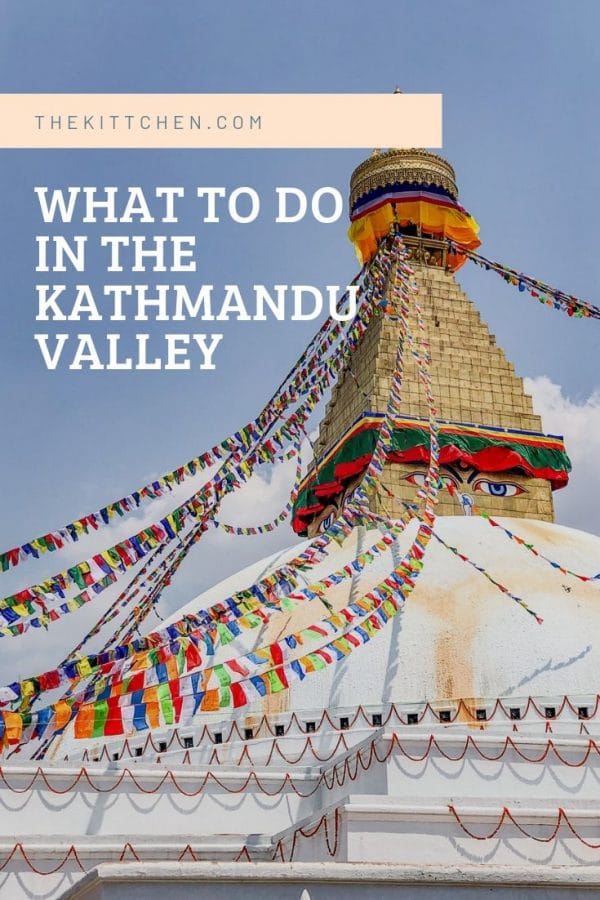
Many of the people who visit Kathmandu set off on treks along the Annapurna Circuit or up to Everest Base Camp. These trips usually take 8-16 days. Instead of trekking, I wanted to see the historic sites in the area.
The larger area around Kathmandu, the Kathmandu Valley is home to seven UNESCO Heritage Sites. During the 1700s and 1800s, the Kathmandu Valley was divided into three kingdoms. These kingdoms were Patan, Bhaktapur, and Kathmandu. The Durbar Square or royal square containing the royal palace and temples, of each of these kingdoms still stands today. My tour was centered both around visiting these squares and the heritage sites within the Kathmandu Valley.
What to do in the Kathmandu Valley:
I spent three days touring the Kathmandu Valley and here are some of the places I went and things that I did:
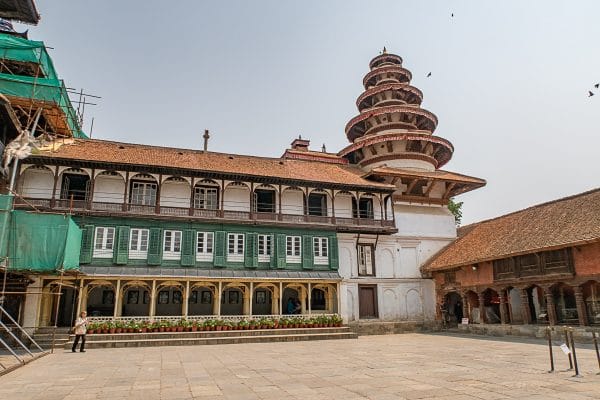
Kathmandu’s Durbar Square / Hanuman-Dhoka Durbar / Basantapur-Dhoka Durbar
This is the ancient city of Kathmandu which was first established in 1672. Kathmandu’s Durbar Square is the term for the entire area which includes Hanuman-Dhoka Durbar and Basantapur-Dhoka Durbar. Here you will find both Buddhist and Hindu shrines and temples, and the royal palace. In total there are 43 historic buildings here. The square is also the site of festivals and cultural traditions that go back for centuries.
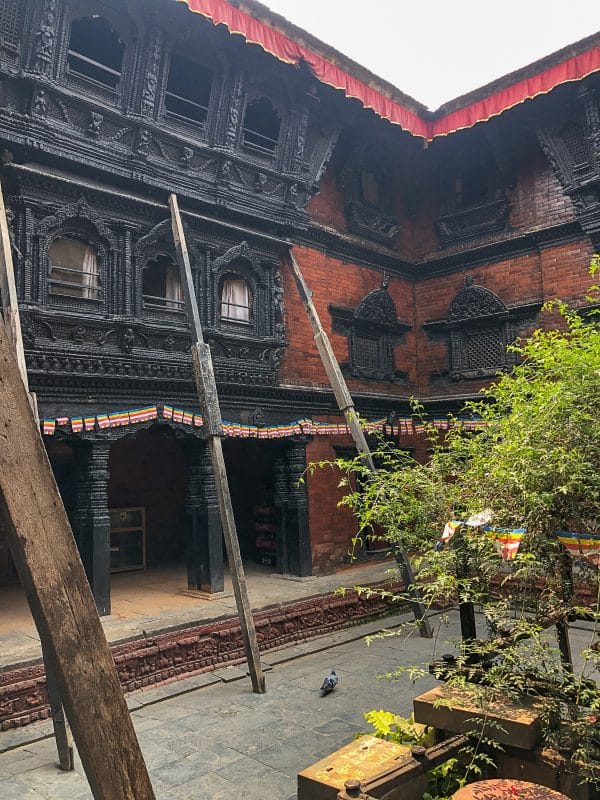
Kumari Temple
Located within Kathmandu’s Durbar Square, the Kumari Temple is the home of the living goddess. The living goddess, called the Kumari is a young girl who is hand selected from a specific community at a young age and she is considered to be the living incarnation of the goddess Taleju. Today the kumari is about 4 years old and she has been the living goddess for about a year. When she reaches puberty she will leave the temple and be replaced with a new living goddess.
Photos of the living goddess are strictly prohibited but you are welcome to see the Kumari when she comes to the window to see her admirers.
Nautale Durbar
This nine-story royal residence is within Basantapur-Dhoka Durbar and is currently being repaired after the 2015 earthquake.
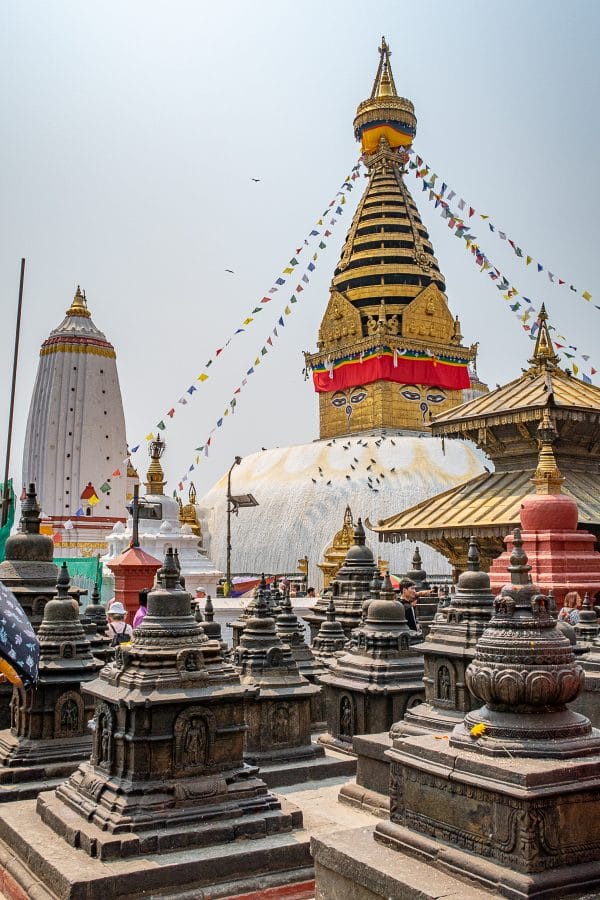
Monkey Temple (Swoyambhunath)
Seeing this temple was a highlight of my time in Kathmandu. Swoyambhunath is commonly referred to as the Monkey Temple because of all the monkeys that call the area home. It’s a popular destination because it is right in the city of Kathmandu and because both Hindus and Buddhists come here to worship.
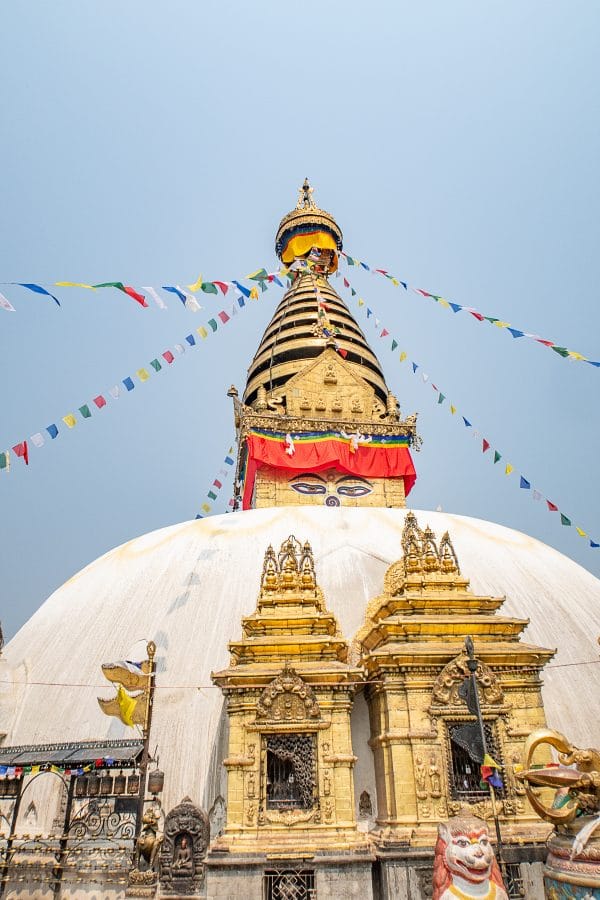
The centerpiece of the site is a large stupa that looks similar to Boudhanath. Most stupas house religious relics, but this stupa is a historical stupa. According to the story, the valley where the stupa is located was once a lake. A lotus flower bloomed and the valley created itself. The stupa was placed over an eternal flame within the valley.
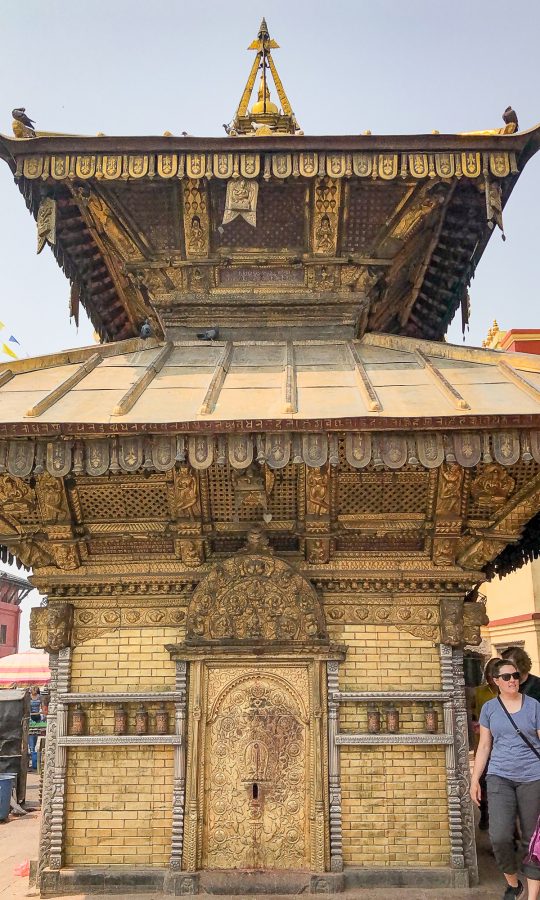
The stupa is a Buddhist architectural form, while the pagodas beside the stupa are a Hindu architecture. The Harati Devi Temple beside the stupa is a physical representation of how Hinduism and Buddhism co-exist and are woven together in Nepal. The temple takes the shape of a pagoda but it has Tibetan Buddhist prayer wheels around the exterior. This temple is dedicated to the Harati goddess who is the protector of children.
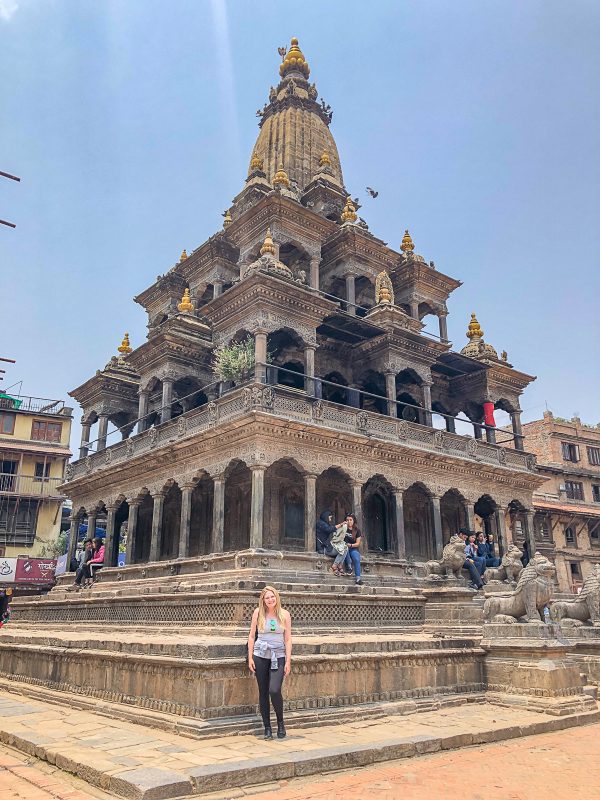
Patan Durbar Square
Patan Durbar Square was the royal square of the Patan kingdom. Patan was an artistic community known for its craftspeople and they especially excelled in metalwork and wood carvings. The royal palace is exquisitely decorated with metalwork and wood carvings. While all of the palaces and pagodas we visited were embellished with carvings, the carvings in Patan were the most impressive.
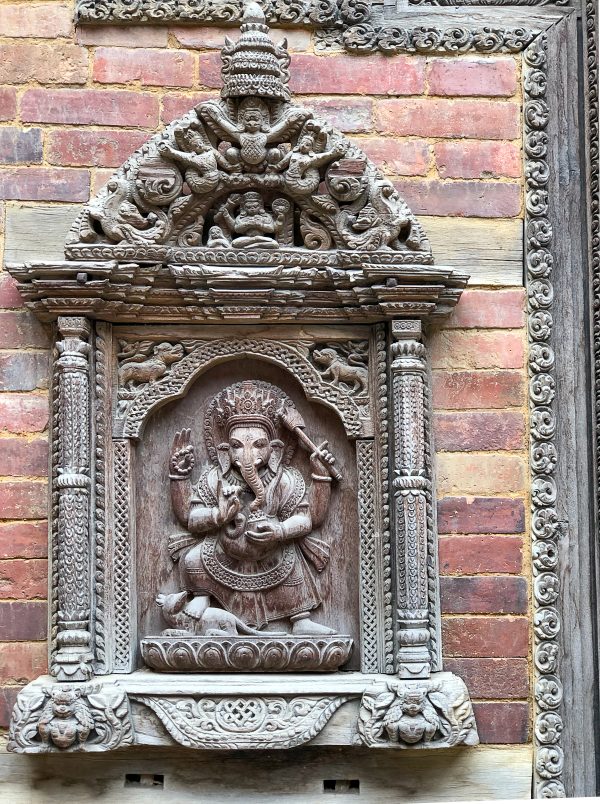
The wood carvings represent the many deities within the Hindu faith. My guide, Sunil explained that there are millions of deities within Hinduism. These deities are usually depicted with their consort and objects which make it possible to identify the god or goddess. One of the more often depicted and easiest to identify gods is Ganesh who appears in carvings throughout the square.
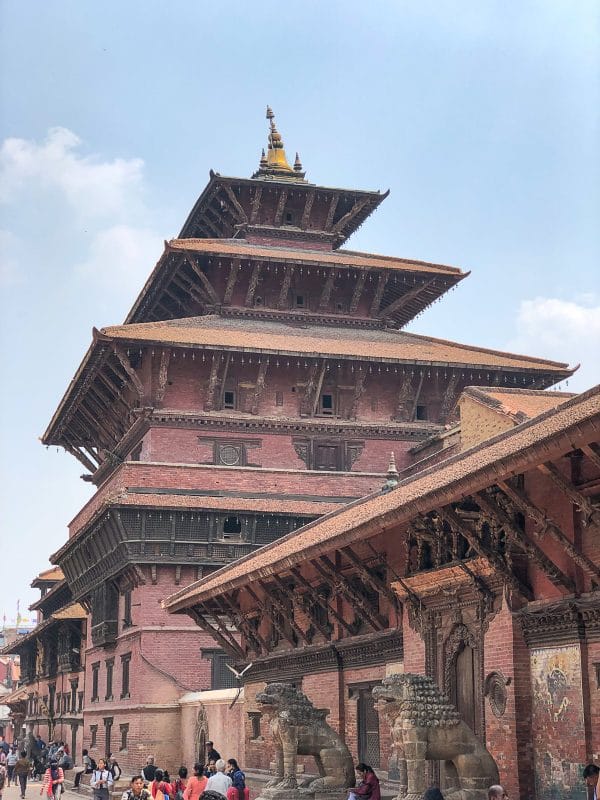
Today the royal palace is the location of the Patan Museum which is considered to be one of the best metalwork museums in Asia. I highly recommend visiting this museum, and I am glad that it was one of my first stops in Kathmandu as it gave me the base knowledge of Hinduism and Buddhist iconography and symbolism that I could use to understand the subsequent sites we visited.
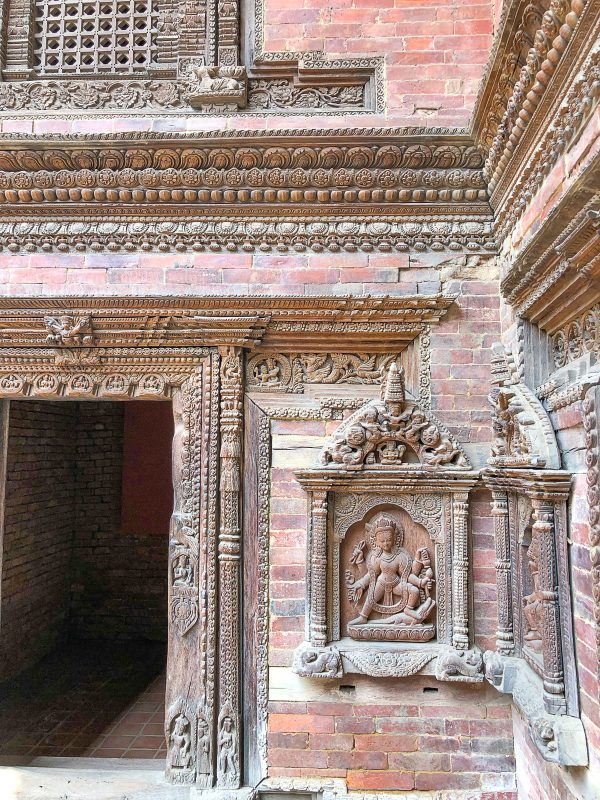
Be sure to walk to the back of the royal palace to see the teams of woodcarvers and craftsmen who are recreating architectural elements that were damaged in the earthquake based on meticulous records.
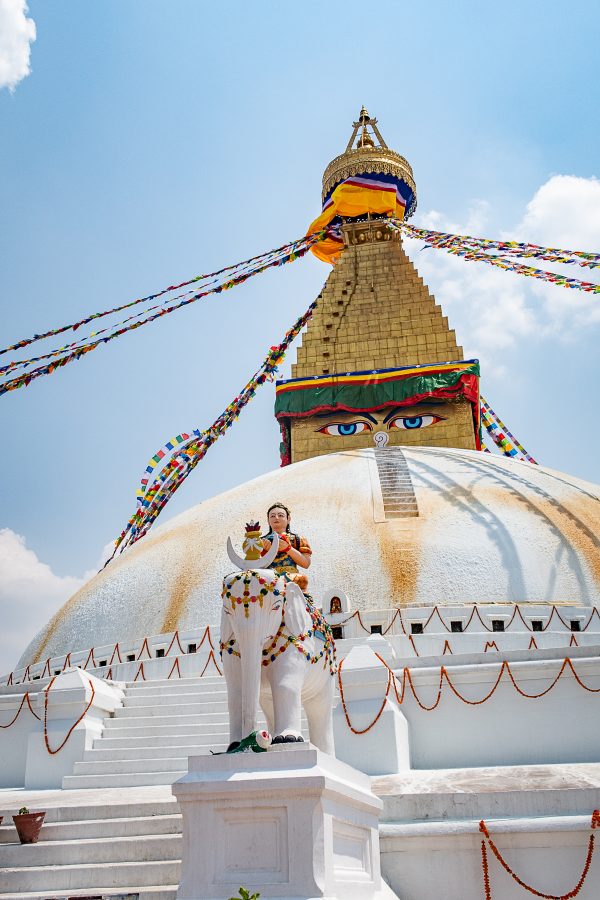
Boudhanath
This large stupa is a pilgrimage site for Tibetan Buddhists. It’s one of those places that really does take your breath away. Boudhanath is far larger than any of the others we visited, it is the largest in Nepal and one of the largest in the world.
On a bright sunny day, I couldn’t look at it without sunglasses on. People bring prayer flags to be hung from the stupa and there are many flying in the wind.
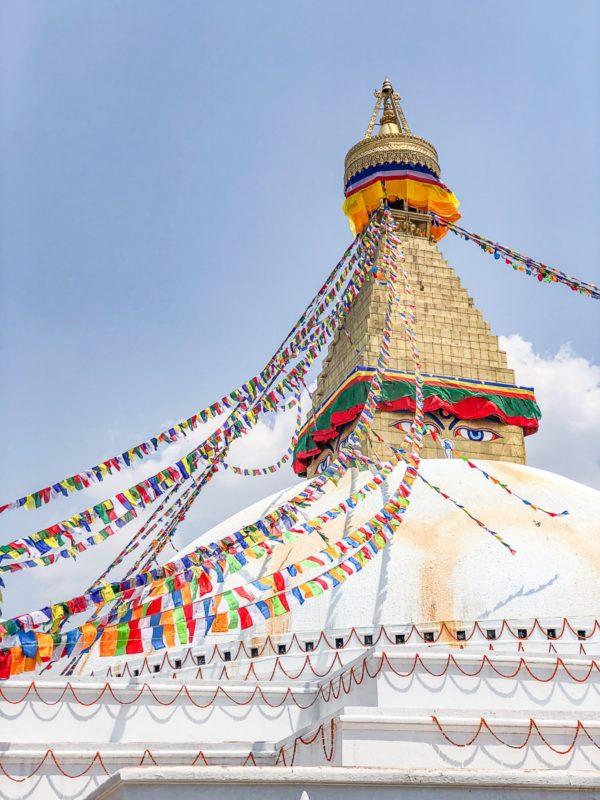
Stupas represent the five elements and the journey from the material world to the enlighted world. Stupas have the same basic architectural elements. The base of the stupa represents the earth. Prayer wheels are located around the base of a stupa and when people spin the prayer wheels it is a way to reciting the prayer inside. A dome is on top of the base, this represents water. On top of the dome is a square that provides the base to the steps of the stupa. This smaller square base represents fire. The thirteen steps above that represent the air, and the top of a stupa represents the sky.
Usually, a stupa houses religious relics, such as the ashes of significant people. Stupas don’t have an inside, people walk around the base and spin the prayer wheels to worship.
According to legend, this temple was built after a poor woman asked the king for land to build a stupa. He agreed, but people got jealous and didn’t want to give her much land, so the king gave the woman a skin of an animal and he said that he could have a piece of land as big as the animal skin. The woman had wanted to build a grand stupa, so she cut the skin into a rope and used it to claim enough land to build a great stupa.
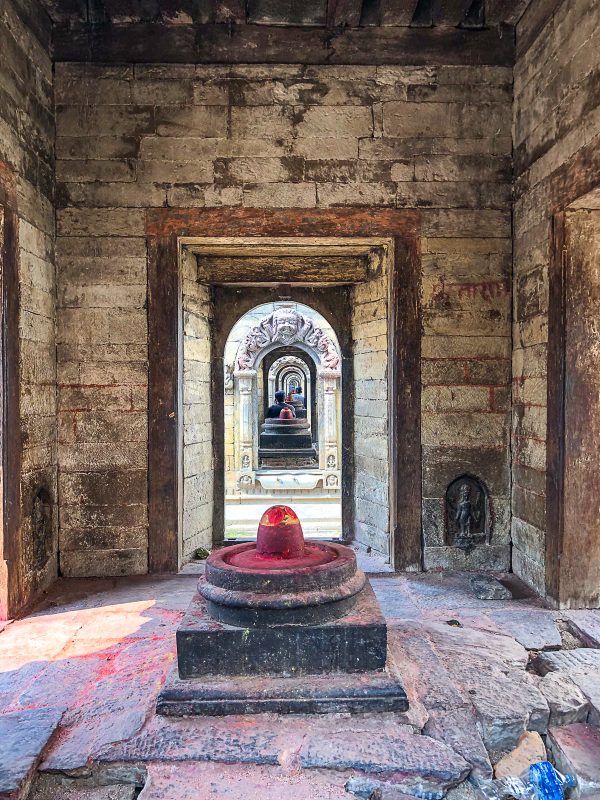
Pashupatinath
This Hindu temple is an important pilgrimage site for Hindus as well as a place where bodies are cremated along the river. Hindus believe that by cremating a body they are returning it to the five elements of earth, water, fire, air, and sky.
Only Hindus are allowed inside Pashupatinath, but visitors can walk along the river to see the cremation sites and the shrines along the river.
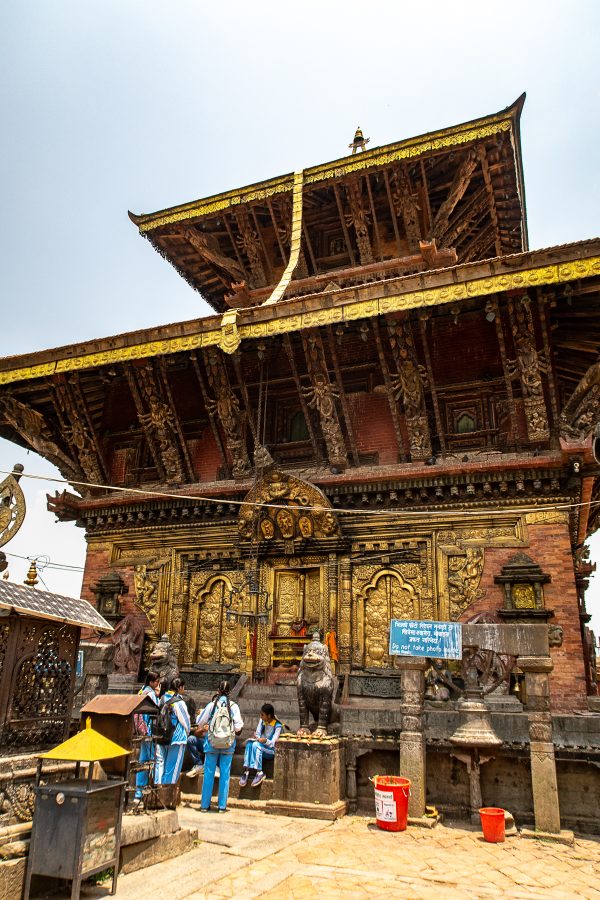
Changu Najarayan
This is the most ancient pilgrimage site in the Kathmandu Valley and the temple is considered to be the oldest in Nepal. This pagoda is a shrine to Vishnu and the site dates back to the 3rd century at which time 700 homes could be found in the city.
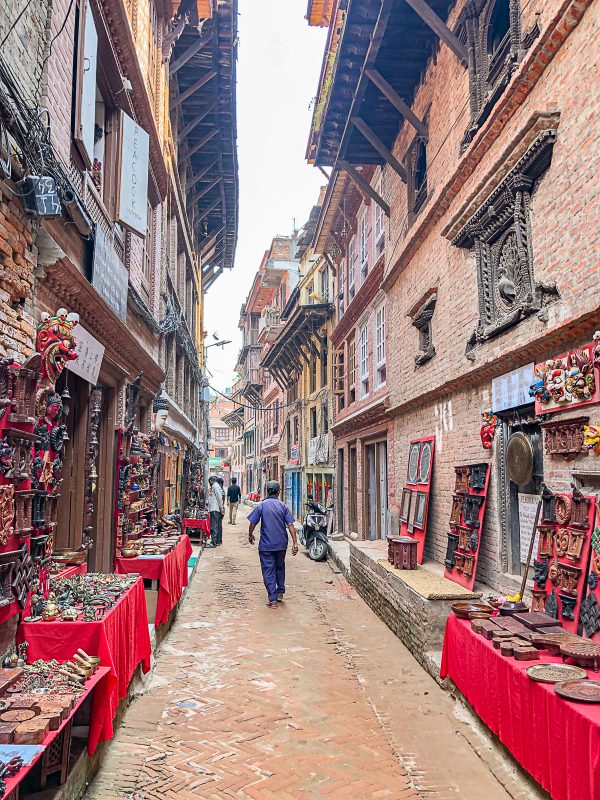
Bhaktapur
This is the third former kingdom that we visited. Bhaktapur is the cultural capital of Nepal, and it is known for their pottery square where potters are still working today. Bhaktapur is the site of many festivals and ceremonies including the New Year festival.
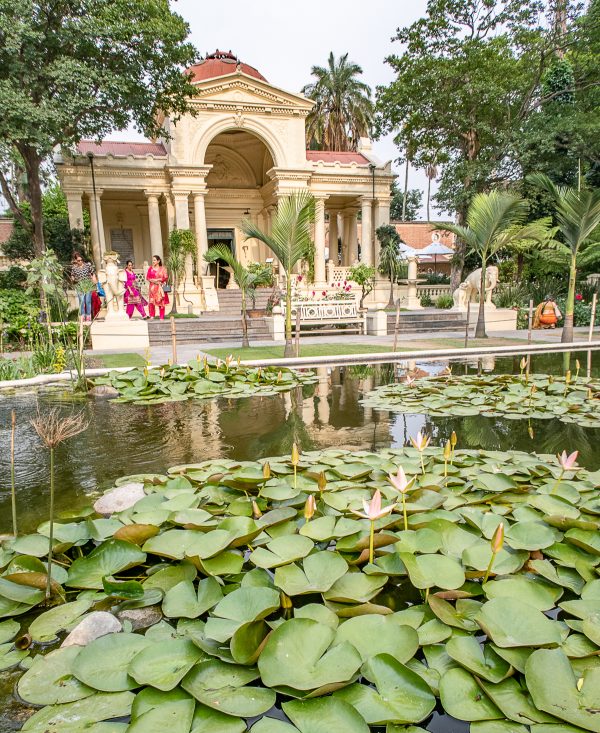
Garden of Dreams
The Garden of Dreams is a neatly manicured garden that is about 2 blocks in size. The walls around the space turn the garden into an oasis away from the busy city.
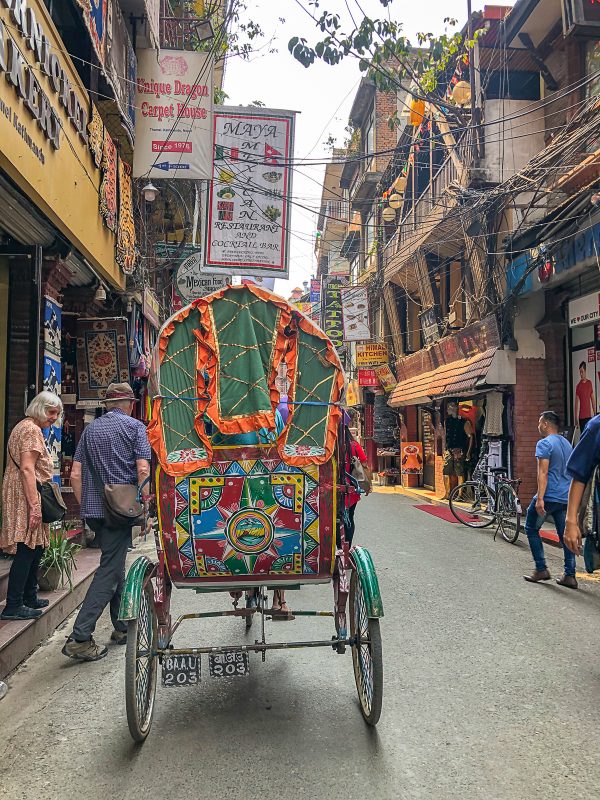
Thamel
You might end up staying in this touristy section of the city. There are lots of shops selling clothing, small metal sculptures, wood carvings, jewelry, and trekking gear in this neighborhood. There are plenty of restaurants too.
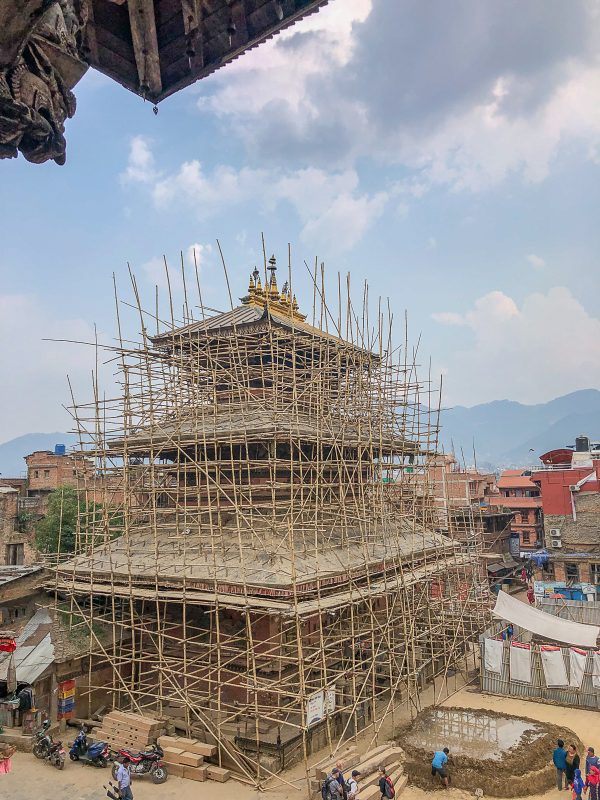
What to Know Before You Go:
A visa is required, but it can be received upon arrival at the airport. Bring $25 USD to pay for the visa. (This was the only place I went in Nepal that accepted USD).
A major earthquake hit Kathmandu in 2015 and it caused major destruction and thousands of lives were lost. In the four years since the city has made a recovery and the majority of the historic sites have been repaired. Don’t feel like Kathmandu isn’t ready for tourists yet, it is, and it isn’t crowded.
You will need the local currency, Nepal Rupees. USD and other currencies are not used, this was a big contrast to Cambodia where everyone seemed to prefer USD.
There is a small fee Rs. 1000 (about $9) to enter the heritage sites. Be sure to bring cash.
I booked my trip through Prakash at Approved Holidays and he was wonderful.
